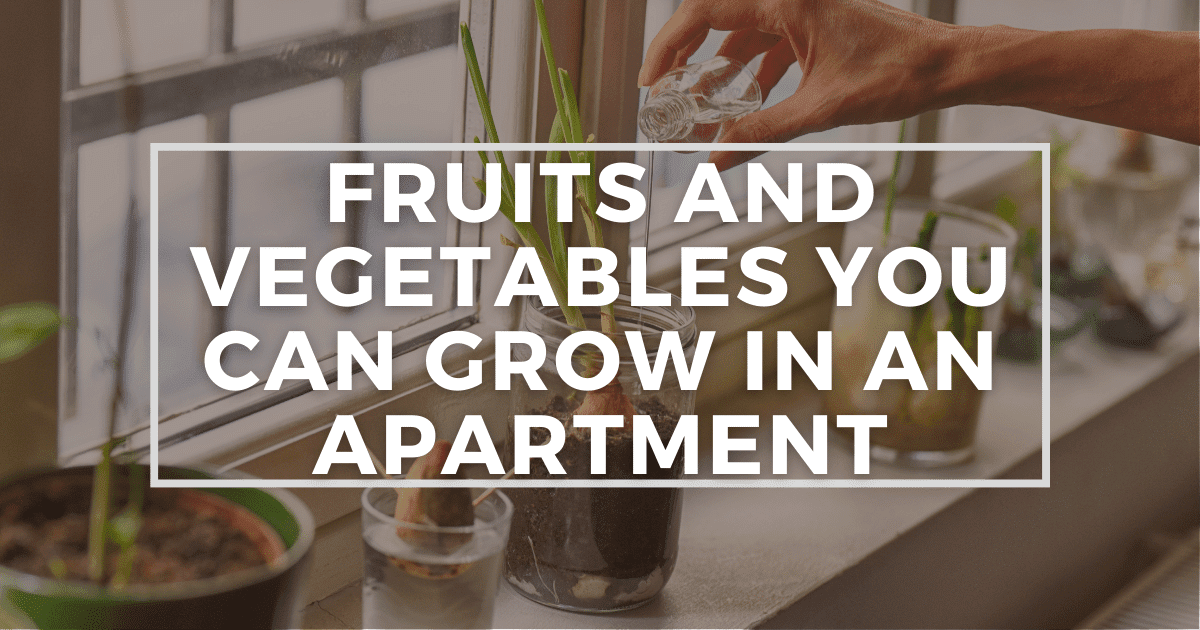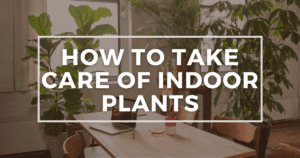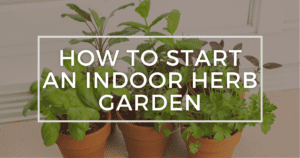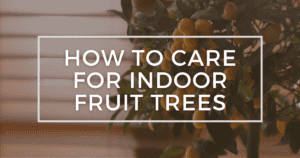Living in the city, in an apartment, especially one that doesn’t get much direct sunlight you have to be a little bit more creative when it comes to indoor gardening. It becomes difficult to successfully grow plants, especially edible and fruiting ones. Before even attempting to start anything let’s first learn what fruits and vegetables would be possible to be grown indoors. There’s only so much you can make possible so why not start with the highest probability?
What Are The Fruits and Vegetables You Can Grow Indoors?
Some of the best and easiest fruits and vegetables to grow in small spaces such as apartments are herbs, peppers, tomatoes, lemons, strawberries, onions, and greens such as lettuce, spinach, kale as well as microgreens. Choosing plants that can thrive in container pots or small planters would be the key to success. Also, look for varieties that are specifically bred to be compact such as plants with descriptions that include bush, dwarf, compact, and miniature.
How To Grow Your Fruits and Vegetables Indoors Successfully
- Pick the right space
Choosing the best place to accommodate your plants will play a part in their growing process. Somewhere close to a window with the best lighting situation and good air circulation will help the plants grow stronger and avoid problems with diseases. Alternatively, you can create such space by supplementing light with grow lights and adding a simple house fan to create a current of air around the plants.
- Choose the right container size
Depending on the plant you’re growing choose the appropriate pot size and depth for the plant. Shallow-rooted green may only require a 2-inch depth pot while a deep-rooted plant may need at least 12 inches. Therefore, consider the eventual size of the plant and decide from there. However, no matter what the eventual size you choose do consider one with a drainage hole. While some plants like moist soil most do not like to be saturated in water.
- Consider the potting mixture
There would be a difference in the soil used for the outside garden and for your container pot. High-quality potting soil that allows good drainage is a must for container plants. Choose a mix that provides a loose medium that retains moisture and drains excess water. Vermiculite or perlite, peat moss or coco coir are good amendments to consider in your potting mixture.
- Fertilizing
Since potted plants are in an enclosed environment and do not have naturally occurring nutrients there would be a need to supplement your plants to grow properly. During the growing period, the plant will benefit from organic liquid or granular fertilizers.
Fruits and Vegetables to Grow
Herbs
These are probably the easiest plant to grow indoors. They don’t take up much space, all you need is a sunny window spot, and to remember never to let them go dry, water them regularly. Herbs might not be considered as an actual meal they add great flavour as a seasoning. Some varieties to try are Basil, mint, cilantro, parsley, rosemary, thyme, or chive.
| Seed to harvest | 60 to 90 days (average time) |
| Lighting requirement | At least 6 to 8 hours of sunlight or 12 hours of artificial light |
| Pot size | 6-inch diameter, minimum 4-inch deep |
Sprouts and Microgreens
Packed with nutrients, super easy to take care of, and can be sprinkled onto almost any dish shouldn’t that be enough reason to add these flavourful greens to your collection of edible container plants? You can broadcast he seeds on the surface of a soil mix in growing trays, spray with water to keep the soil moist and you should see germination within a few days. Microgreens can be harvested in 2-4 weeks, just make sure that they are at least 2 to 3 inches for better yield.
| Seed to harvest | 7 to 21 days (average time) or until stems are 2 to 3 inches tall to harvest |
| Lighting requirement | 5 to 8 hours of sunlight under shade or 12 to 18 hours of artificial light |
| Pot size | shallow tray about 2 inches |
Salad Greens
Leafy greens like lettuce and spinach can grow well indoors as long as there is sufficient lighting and you can enjoy freshly harvested salads daily. There are some varieties where you have an option of harvesting them in the baby leaf stage. Salad greens to opt for are loose-leaf lettuce, spinach, chard, arugula, kale, and mustard greens.
| Seed to harvest | 21 to 58 days |
| Lighting requirement | At least 5 hours of direct sunlight or 14 to 16 hours of artificial light |
| Pot size | 18-inch container, 6 to 12 inch deep |
Scallions
Another crop that is easy to grow indoors, you don’t even need to grow from seeds. The next time you have a spare green onion just plop them in a container with about an inch of water then place them in an area that receives sunlight. When the roots are a couple of inches long, you can transplant them in a shallow container with potting mix to continue growing.
| Seed to harvest | 60 to 65 days |
| Lighting requirement | 6 to 7 hours of sunlight or 12 to 14 hours of artificial light |
| Pot size | 8-inch pot or larger |
Garlic Greens
Like scallions, garlic greens can be easily grown indoors. Place 3 to 4 garlic cloves in a 4-inch pot and place on a sunny area and water lightly. You can start harvesting when the greens are at least 6 to 8 inches tall.
| Seed to harvest | 14 to 21 days (at least 6 to 8 inches tall) |
| Lighting requirement | 6 to 8 hours of sunlight or 14 to 16 hours of artificial light |
| Pot size | 2 inches deep |
Cherry Tomato
This variety of tomatoes will grow well in any sized container but do choose one that can support the eventual size of the plant as well as consider space for the cage or stake as they can be quite top-heavy. As with any fruiting plant, they require a lot of sun exposure, so make sure your tomato receives at least 10 hours of light per day.
| Seed to harvest | 55 to 85 days |
| Lighting requirement | 10 hours of light per day |
| Pot size | 6-inch pot |
Strawberries
Strawberries can grow well in containers and they can even thrive indoors so you can grow them all year long. Just choose a sunny spot for its home or supplement it with artificial light. Choose a container large enough to handle them, though they can also be grown in a hanging basket, or for a more dedicated medium pick up a specialized strawberry pot. This fruit prefers a more acidic and moist soil but does not enjoy soaking and water logging.
| Seed to harvest | 5 to 6 months (after the seed germinates) |
| Lighting requirement | 6 hours of direct sunlight |
| Pot size | 8-inches diameter, 6-inches deep (minimum) |
Final Thoughts
As a beginner, while gaining confidence and familiarizing with the growing environment it’ll be better to start with vegetables that require little effort and are fast growers like salad greens such as lettuce, microgreens, and herbs.
Don’t let the small space or unfavourable lighting deter you from growing your own produce. While growing fruits and vegetables indoors may require a lot more dedication and patience, there’s a certain accomplishment when you get to eat what you grow.




